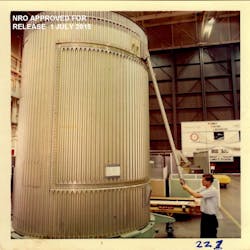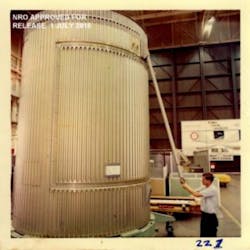The National Reconnaissance Office has declassified a trove of documents related to the Manned Orbiting Laboratory, an Air Force program publically announced in 1963 ostensibly intended to conduct scientific experiments. The classified mission was to provide high-resolution photographic coverage of the Soviet Union. As the NRO puts it, “The Air Force controlled development of the satellite, which was consistent with MOL’s unclassified mission, while the NRO ran development of the covert reconnaissance mission of the program, including the camera system and other subsystems.”
The program was seldom fully funded because of competition from other DoD programs, NASA, and the Viet Nam War. In addition, the performance of unmanned surveillance systems was improving. President Nixon cancelled the program in 1969. According to NRO, “The MOL program operated for five and one half years and spent $1.56 billion, but never launched a manned vehicle into space.”David Axe in The Daily Beast notes other drawbacks of the program, calling it “…a diplomatic nightmare that officials feared might cause a Soviet backlash.” He quotes Secretary of State Dean Rusk of writing in 1965, “It is likely that we will encounter some international problems, perhaps of considerable difficulty if the MOL project, as now planned, is carried out.” In particular, the program threatened to undermine a 1963 United Nations resolution banning weapons from space.
Axe’s article is a nice summary of the program—both diplomatic issues and technical capabilities. Regarding the latter, each MOL mission was to last 40 days, after which “…the two-man crew would pack up their film and pile into a reentry capsule for the fiery journey back to Earth.” No streaming video in the 1960s.
You can find all the declassified NRO documents on the MOL program, and a video (apparently silent), here.
About the Author

Rick Nelson
Contributing Editor
Rick is currently Contributing Technical Editor. He was Executive Editor for EE in 2011-2018. Previously he served on several publications, including EDN and Vision Systems Design, and has received awards for signed editorials from the American Society of Business Publication Editors. He began as a design engineer at General Electric and Litton Industries and earned a BSEE degree from Penn State.

